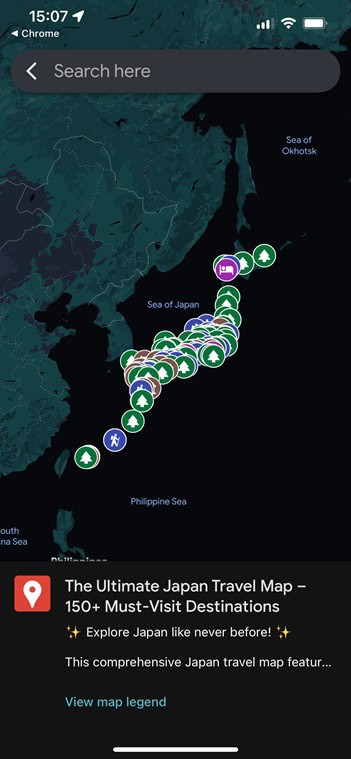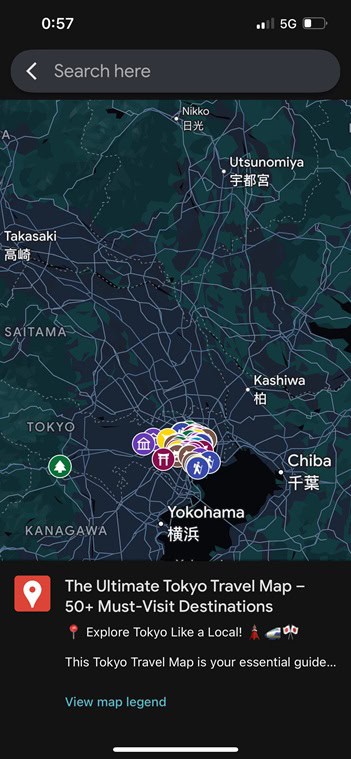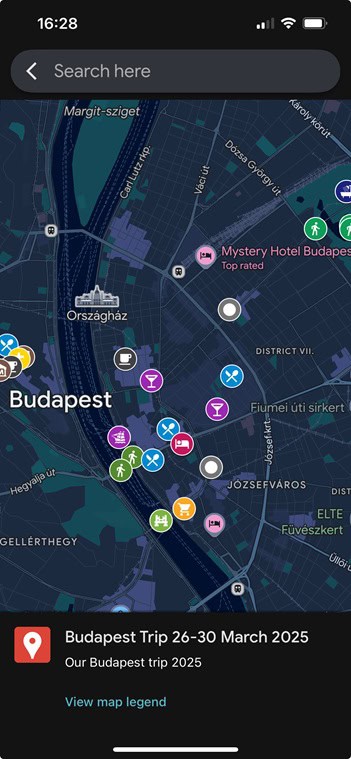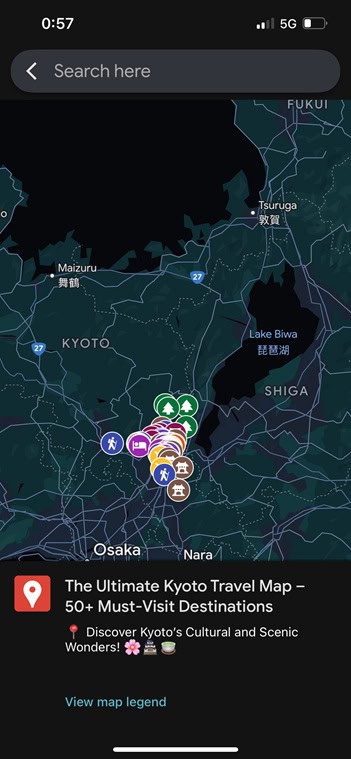Introduction: Japan and Culture
Japan is a country where every street corner, tea bowl, and market stall holds centuries of tradition—and yet it all blends seamlessly with futuristic trains and neon-lit cities. But if you’re only sticking to the major landmarks and taking pictures of Mount Fuji from afar, you might be missing out on the real heart of Japan.
To truly experience Japan like a local, you have to slow down and engage—with people, with customs, and with the quieter rhythms of daily life. Whether you’re traveling as a family or seeking a solo cultural deep dive, this guide will show you how to move beyond the tourist circuit and into the moments that matter.
TL;DR (Too Long; Didn’t Read)
This guide shows you how to experience Japan beyond the tourist trail — from staying in ryokan or machiya to exploring neighborhood markets, street food stalls, and seasonal traditions. Learn how to join tea ceremonies, wear a kimono, visit shrines at sunrise, and relax in local onsen. Packed with cultural tips, etiquette, and practical advice, it’s your roadmap to connecting deeply with Japan’s people, food, and daily rhythms.
Get Your FREE London Travel Map + 5 Must-Have Travel Resources!
Plan smarter, stress less, and make every trip unforgettable with these exclusive tools—100% FREE!
📩 Sign up now & download instantly!

Stay Where Locals Stay: Ryokan, Minshuku & Neighborhood Homes
🏡 Ryokan: Traditional Comfort with a Cultural Twist
A ryokan is more than a place to sleep—it’s a cultural experience in itself. These traditional inns offer tatami flooring, sliding paper doors, and futon bedding laid out fresh each night. Meals are often beautifully presented kaiseki feasts, prepared seasonally and served in your room or a communal dining space.
You’ll typically be given a yukata (casual robe) to wear throughout your stay, including to dinner and the on-site onsen (hot spring bath).
Best places to stay in a ryokan:
- Kyoto (Gion or Arashiyama districts)
- Hakone (with private onsen)
- Takayama (historic preservation district)
- Izu Peninsula (coastal scenery with fewer crowds)
👨👩👧 Family Note: Many ryokan offer child-friendly rooms and private baths—just call ahead or check for family-specific accommodations.
🛏️ Minshuku: Homey, Local Hospitality
If you want something even more low-key and budget-friendly, try a minshuku—a Japanese version of a bed-and-breakfast. Often run by older couples or families, these stays offer modest rooms and home-cooked meals that reflect the local area.
They’re especially popular in countryside villages and coastal towns, where you’ll get more chances to interact with your hosts and practice a little Japanese.
🏘️ Live Like a Local: Machiya & Neighborhood Rentals
Renting a machiya (traditional townhouse) in Kyoto or staying in a local apartment in Tokyo suburbs (like Setagaya or Kichijoji) allows you to shop at nearby bakeries, chat with neighborhood shopkeepers, and blend into the everyday rhythm of Japanese life.
It’s ideal for slow travelers, couples, or remote-working parents who want space and flexibility.
🛏️ Where to Stay in Japan for an Authentic Experience
You’ve learned the difference between ryokan, minshuku, and machiya—here are highly rated stays (8/10+) that match that local feel for families and cultural explorers.
Gora Kadan (Ryokan)
📍 Hakone (near Tokyo) — classic onsen town in the mountains
✨ Former imperial retreat with serene gardens, private open-air baths, and seasonal kaiseki dining. Ideal for couples or families wanting a splurge-worthy ryokan experience.
Book: Trip.com
HOSHINOYA Kyoto (Luxury Ryokan-Style)
📍 Arashiyama, Kyoto — riverfront retreat reached by boat, close to bamboo grove
✨ Tranquil rooms with tatami aesthetics, refined kaiseki, and immersive cultural touches—perfect for cultural explorers wanting a serene Kyoto base.
Book: Trip.com
Ryokan Asunaro (Traditional, Family-Friendly)
📍 Takayama (Old Town) — walkable to morning markets and preserved streets
✨ Historic wooden house charm, warm hospitality, and spacious tatami rooms—great value for families wanting a traditional stay without the crowds.
Book: Expedia
MACHIYA RESIDENCE INN KUROHORO
📍 Kanazawa (near Kanazawa Station) — stay in a restored machiya with easy access to markets and samurai district
✨ Private kitchen, laundry, and authentic architectural details—perfect for longer stays and travelers wanting to blend into local life.
Book: Trip.com
💡 Tip: Book early for peak seasons (sakura & autumn foliage). Family rooms and private onsen suites sell out quickly—set flexible dates and reserve cancellable rates when you can.
For more handpicked ryokans, onsen resorts, and tips for choosing the perfect stay, visit our dedicated guide here.
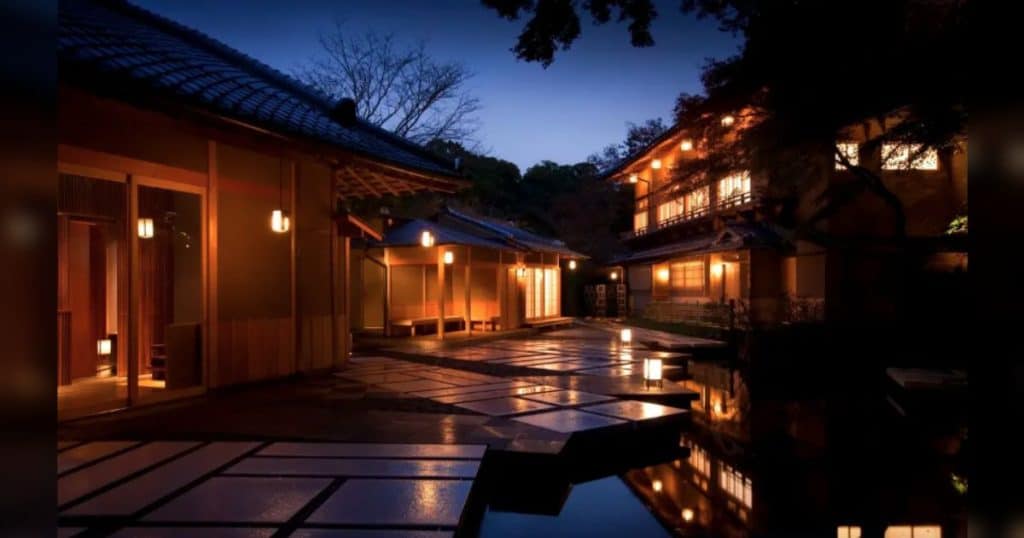
Eat Like a Local: Markets, Street Food & Home-Style Dishes
🍣 Visit Local Food Markets
Japan’s markets are not just for grocery shopping—they’re immersive experiences filled with color, chatter, and fresh flavors.
Some standout local markets:
- Nishiki Market (Kyoto): Try yuba (tofu skin), pickled vegetables, or sesame mochi.
- Omicho Market (Kanazawa): Known for pristine seafood and bowls of kaisen-don (seafood rice bowls).
- Tsukiji Outer Market (Tokyo): Still bustling with food vendors offering grilled eel skewers, tamagoyaki (Japanese omelet), and miso-glazed eggplants.
🛍️ Tip: Bring cash and don’t hesitate to point, smile, and ask questions—even with a language barrier, food brings people together.
🏮 Discover Japan’s Street Food Culture
Whether you’re wandering the streets of Osaka or attending a local matsuri (festival), these street foods are a must:
- Takoyaki: Crispy dough balls with octopus bits inside.
- Okonomiyaki: Savory pancake made with cabbage and your choice of toppings.
- Taiyaki: Fish-shaped pastry filled with red bean, custard, or sweet potato.
- Yakitori: Grilled skewered chicken—an izakaya favorite.
🍡 Family Tip: If you’re traveling with picky eaters, try melonpan (sweet bun) or freshly made crepes found in Harajuku.
🥢 Cook or Dine with Locals
For deeper cultural immersion, book a home-cooking class or community dining experience where locals guide you through making sushi, bento, or wagashi (Japanese sweets).
Don’t forget:
- Always say itadakimasu before eating.
- End your meal with gochisousama deshita (thank you for the delicious meal).
- Remove shoes before entering homes or certain restaurants with tatami areas.
For even more tasty finds and insider dining tips, check out our ultimate Japan food lover’s guide.
Embrace Local Traditions: Tea Ceremonies, Arts, and Kimono Culture
🍵 Participate in a Japanese Tea Ceremony
A Japanese tea ceremony is a meditative practice rooted in Zen. You’ll sit quietly while your host prepares matcha with meticulous care, observing each graceful movement with intention.
The experience varies by region, but Kyoto, Uji, and Kanazawa are particularly known for elegant, formal tea schools.
🧘 Cultural Insight: Every part of the ritual—from how you bow to how you rotate your tea bowl—is steeped in mindfulness and respect.
Klook.com🖌️ Try Traditional Arts
Japan offers hands-on cultural workshops in:
- Shodo (calligraphy)
- Ikebana (flower arrangement)
- Origami and washi paper crafts
- Wagashi making (seasonal Japanese sweets)
🎎 These experiences are ideal for cultural explorers, art lovers, and families with children 8+.
Klook.comNeed More Help Planning Your Trip?
👘 Dress the Part in a Kimono
Wearing a kimono or yukata for the day is one of the most enriching ways to connect with Japanese aesthetics and history.
📍 Best places to rent and stroll in style:
- Gion district in Kyoto
- Higashiyama or Kanazawa’s Chaya district
- Kamakura and Asakusa in Tokyo
💡 Etiquette Tip: Left-over-right wrap only! Right-over-left is used for funerals.
Klook.com🎟️ Ready to book the cultural experiences you just read about?
Reserve authentic tea ceremonies in Kyoto or Uji, kimono rentals in Gion or Asakusa, hands-on workshops (calligraphy, wagashi), and guided food market walks (e.g., Nishiki, Tsukiji Outer) through trusted platforms like Klook.
For museum or theme-park entry where available, check fast-track and mobile tickets via Tiqets.
Many major attractions can be booked on reliable platforms like Klook. If you don’t find your dates or preferred time, visit the attraction’s official website for current hours, availability, or on-site purchase options.
Walk in the Footsteps of Locals: Neighborhoods, Rituals, and Daily Rhythms
🛕 Morning Shrine Visits & Everyday Rituals
Want to see how locals start their day? Visit a neighborhood shrine or temple before 9 a.m.
You’ll see people:
- Washing their hands and mouths at the temizuya.
- Bowing twice, clapping twice, then bowing once more in prayer.
- Drawing omikuji (paper fortunes) and tying them onto designated racks.
- Writing wishes on ema (wooden plaques) for family health, academic success, or love.
✨ These quiet morning rituals give you a glimpse into the spiritual life of everyday Japanese people—simple, respectful, and deeply intentional.
👨👩👧 Family Insight: Kids love drawing fortunes and writing wishes. It’s a fun, interactive way to engage in cultural traditions.
🏘️ Explore Local Neighborhoods
Beyond the big tourist zones, you’ll find charming pockets of daily life where Japan’s slower pace shines.
Favorite local neighborhoods:
- Yanaka (Tokyo): Old-school charm with cat statues, wooden homes, and traditional snack shops.
- Shimokitazawa (Tokyo): Indie cafés, thrift shops, and relaxed bohemian vibes.
- Motomachi (Yokohama): Western-Japanese fusion, perfect for strolling.
- Naramachi (Nara): Traditional merchant houses and artisanal shops.
🍶 Look for: tiny izakayas with red lanterns, retro toy shops, neighborhood book cafés, and pocket parks filled with school kids and seniors alike.
♨️ Visit a Sentō or Onsen Like a Local
For many Japanese, going to a public bathhouse (sentō) or natural hot spring (onsen) isn’t just relaxing—it’s a cherished community ritual.
💧 What to expect:
- Wash thoroughly before entering.
- No swimsuits or towels in the bath.
- Silence or quiet conversation is preferred.
- Tattoos may need to be covered (or choose tattoo-friendly baths).
📍 Top local spots:
- Dogo Onsen (Ehime) – One of the oldest onsens in Japan.
- Takaragawa Onsen (Gunma) – Riverside outdoor baths.
- Kurama Onsen (Kyoto) – Forested serenity just outside the city.
👨👩👧 Family Tip: Look for kashikiri onsen (private baths) where families can bathe together.
Klook.comDiscover Our Ultimate Collection of Travel Maps
Local Transport Tips: Move Like a Local
Japan’s public transport is world-class—and locals use more than just the shinkansen.
- JR Pass & Regional Passes – Ideal for multi-city trips; book in advance via Klook or Trip.com.
- Suica / Pasmo IC Cards – Tap to pay for trains, buses, and even vending machines. Recharge at stations or convenience stores.
- Buses & Trams – Perfect for reaching smaller towns and rural areas.
- Klook for Intercity Travel – Compare and book trains, buses, and flights easily in English.
💡 Family Tip: Regional passes often include discounted entry to attractions—worth checking if you’re traveling with kids.
Klook.comMoney & Payment Culture in Japan
While Japan is modern, cash is still king in many places—especially small eateries, temples, and rural shops.
- Cash – ATMs at 7-Eleven and post offices accept foreign cards.
- Cards – Accepted in most hotels, big stores, and some restaurants; less common in countryside.
- IC Cards – Suica/Pasmo also work for small purchases at convenience stores.
- Wise for Currency Exchange – Get yen at real exchange rates before your trip or transfer funds on the go (check our Wise review to learn more).
✨ Cultural Tip: Place cash neatly on the tray provided at checkout instead of handing it directly to staff.
Helpful Tips to Blend In
🗣️ Learn a Few Key Phrases
You don’t need to be fluent, but even a few words go a long way:
- Hello: Konnichiwa
- Thank you: Arigatou gozaimasu
- Excuse me / Sorry: Sumimasen
- Delicious: Oishii
- Goodbye: Sayonara
✨ Locals often warm up quickly when they hear a tourist trying—even if it’s not perfect.
📱 Use Local Apps to Navigate Like a Pro
- Google Translate: For menus, signs, or conversations.
- Japan Travel by NAVITIME: Best for train routes and local transit.
- LINE: Japan’s most-used messaging app. You’ll see QR codes for LINE everywhere!
- Wise App: A lifesaver for exchanging currency and budgeting in real time with favorable rates and low fees.
🧠 Respect Everyday Customs
- Don’t walk while eating—pause and enjoy.
- No tipping—hospitality is included in the experience.
- Keep your voice down in trains, buses, and restaurants.
- Carry a small bag for your trash—bins are rare in public.
Best Seasons to Experience Japan Like a Local
Each season in Japan offers unique ways to connect with local life, from seasonal dishes to community festivals.
- Spring (March–May) – Cherry blossom season (sakura) is more than a photo opportunity—it’s a social event. Join locals for hanami picnics under blooming trees and try seasonal treats like sakura mochi and hanami bento.
- Summer (June–August) – Festival season brings lively matsuri with street food stalls, fireworks (hanabi), and traditional dances like bon odori. Perfect time for evening yukata strolls.
- Autumn (September–November) – Crisp weather and vibrant foliage (koyo) create a slower, reflective atmosphere. Seasonal foods include roasted chestnuts (kuri) and matsutake mushrooms.
- Winter (December–February) – Quiet temple visits, steaming nabe hot pots, and snowy onsen towns offer cozy immersion. Look for regional winter festivals with lantern displays.
💡 Local Tip: Check local calendars before you travel—many events, especially in rural areas, are scheduled according to the lunar calendar and may change year to year.
🗺️ Ready to Plan Your Perfect Japan Trip?
From cherry blossom season to autumn foliage, Japan’s magic changes with the seasons. Let our free AI-powered itinerary builder craft a custom, day-by-day travel plan that fits your dates, pace, and interests — whether you’re exploring as a family, couple, or solo adventurer.
✨ Stress-free, tailor-made Japan travel planning starts here:
Hidden Gems in Japan: Off-the-Beaten-Path Experiences
Japan’s most memorable moments often happen away from the usual sightseeing routes. Here are a few lesser-known treasures worth adding to your itinerary:
- Shirakawa-go (Gifu) – A UNESCO-listed village of steep thatched-roof houses, especially magical under winter snow.
- Okunoshima (Hiroshima) – Nicknamed “Rabbit Island,” where friendly wild rabbits roam free.
- Akan-Mashu National Park (Hokkaido) – Known for crystal-clear lakes, rare marimo algae balls, and indigenous Ainu culture.
- Kurashiki Bikan Historical Quarter (Okayama) – Canals lined with white-walled merchant houses and art museums.
💡 Cultural Explorer Tip: Many of these places are best reached via regional trains or buses—use Omio to compare and book routes in English.
Klook.com
Test Your Travel Smarts with Our Quizzes!
Think you know your way around the world? From cultural traditions to hidden gems, our short and playful travel quizzes are the perfect way to challenge yourself, learn something new, and maybe even spark your next adventure. Great for anyone who loves a bit of travel trivia fun!
Memorable Mentions 🌟
Here are a few more immersive experiences to deepen your cultural connection:
- Fire Rituals at Naritasan Shinshoji: Chanting monks, drums, and flames—just 15 minutes from Narita Airport.
- Sumo Morning Practice: Watch wrestlers train in Tokyo’s Ryogoku district. Go early and bring respectful curiosity.
- Seasonal Festivals:
- Gion Matsuri (Kyoto) – Traditional floats and parades.
- Tanabata (Sendai) – Colorful streamers and wish-making.
- Obon (Nationwide) – A time for honoring ancestors with dances and lanterns.
Conclusion: Travel Slower, Feel More
Japan is often praised for its beauty and precision—but its real magic lies in the moments. Moments like sipping matcha in silence, chatting with a noodle shop owner, or watching the steam rise from a shrine fountain on a cool morning.
When you choose to experience Japan like a local, you’re not just visiting. You’re participating. You’re connecting. You’re stepping into a rhythm that values presence over pace.
Whether you’re a curious cultural explorer or a family searching for meaningful shared memories, these experiences will leave lasting impressions—long after the trip is over.
Plan Your Ultimate Japan Trip
Traveling Japan Like a Local FAQs
Q: Do I need to speak Japanese to enjoy local experiences?
No. A few polite phrases and a translation app go a long way. Locals often appreciate your effort more than perfect pronunciation.
Q: What should I bring to a ryokan stay?
Pack light, but bring socks without holes (you’ll remove shoes often) and a small bag for onsen visits. Yukata and slippers are usually provided.
Q: Can tourists use public baths (sentō) and onsen?
Yes. Follow the posted rules, wash before entering, and check if tattoos are allowed or need covering.
Q: Is tipping considered rude in Japan?
Tipping is not expected—instead, offer thanks verbally (arigatou gozaimasu) or with a small gift in some cases.
📌 Love cultural travel? Explore more ideas on Pinterest →




